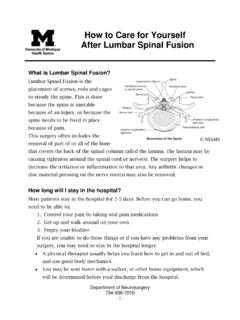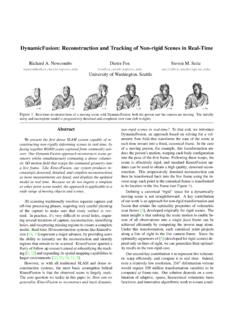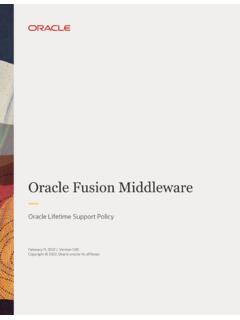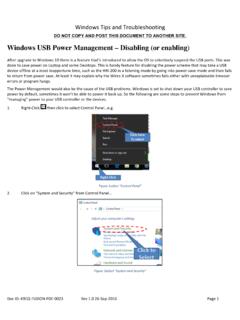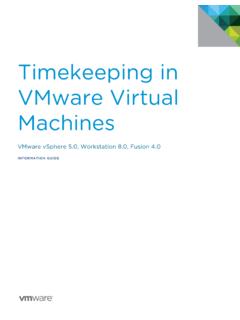Transcription of Nuclear Fusion - NASA
1 2008 Astronomical Society of the Pacific Copies for educational purposes are permitted. Additional astronomy activities can be found here: About the Ac tivity This simple and engaging activity explains Nuclear Fusion and how radiation is generated by stars, using marshmallows as a model. Topics Covered What is cosmic radiation and where does it come from? How are the elements in the universe generated? Participants Activities are appropriate for families, the general public, and school groups ages 10 and up. Any number of visitors may participate. Location and Timing This activity can be used at or before a star party, in a classroom, with youth groups or the general public. It takes about 5 8 minutes.
2 Materials Needed Marshmallows (mini multi-colored ones are best. White and full-sized marshmallows also work.) Or substitute small balls of playdough. Uncooked salad pasta Bowls for the marshmallows and hard pasta A Periodic Table of the Elements (provided below) (Optional) Copies of the Electromagnetic Spectrum for advanced audiences (See Activity Description for a link) (Optional) Napkins for the marshmallows Included in This Packet Page Detailed Activity Description 2 Helpful Hints 7 Background Information 7 Periodic Table 8 Nuclear Fusion How are elements created in stars? Detailed Activity Description Nuclear Fusion Leader s Role Participants Role (Anticipated) Objective: Allow visitors to have an introduction to Nuclear Fusion and the energy it releases.
3 To Do: Display the Table of Elements side of the banner and/or pass out the Table of Elements handouts. To say: Throughout its life, a star generates new elements by fusing atoms together in its core, What s fuse mean? Stars are mostly hydrogen and helium. To Do: Point to Hydrogen and Helium on the Table of Elements. Hold up a marshmallow (or small ball of clay). To say: This represents a proton. The number of protons an atom has in its nucleus determines what kind of element it is. [pointing to Hydrogen on banner or handout] A Hydrogen atom has one proton in its nucleus. So how many hydrogen atoms does this represent? To Do: Have each person take 2 marshmallows out of the bowl. Join together. One. 2 2008 Astronomical Society of the Pacific Copies for educational purposes are permitted.
4 Additional astronomy activities can be found here: To say: Take two protons representing the nucleus of two Hydrogen atoms. Generally Fusion happens with two atomic nuclei at a time. What element has two protons in its nucleus? [point to Helium on handout or banner] Let s see how a star makes helium. To do: Put your hands together with the marshmallows inside. To Say: We ll pretend your hands are the core of a star. Temperatures are so hot and pressures so great inside stars that the atoms are moving tremendously fast and crashing into one another. And sometimes they fuse. Can you make your protons fuse? Let s say the magic words: Nuclear Fusion ! To do: Crush the marshmallows together. To say: The two hydrogen atoms have fused to make the nucleus of what element?
5 Now Nuclear Fusion doesn t generate just new, heavier atoms. Each time two atoms lighter than iron fuse, the reaction releases energy. In the form of gamma-ray radiation. We re using this to represent the released gamma-ray. Helium. Nuclear Fusion ! Helium! 3 2008 Astronomical Society of the Pacific Copies for educational purposes are permitted. Additional astronomy activities can be found here: To do: Set a short spool (or one piece of salad macaroni) representing a gamma ray on the table. Presentation Tip: If you have a more advanced audience: It might be helpful here to point to a picture of the Electromagnetic Spectrum and point out that gamma-rays are the highest energy radiation.
6 You can find one here: You might also want to explain that it is the atomic nuclei that fuse, not the whole atom which would include its electrons. Temperatures are so high in the core of the star that the nuclei have all been stripped of their electrons. The nucleus of an atom contains only protons and neutrons. In the core of a star, the atomic nuclei and the electrons are moving about independent of each other. To Say: Let s make another Helium. Take two more marshmallows I mean, Hydrogen! To do: Pick up and smash two more marshmallows. To Say: Say the magic words: Nuclear Fusion ! To do: Set out a gamma-ray piece. To Say: And another. To do: Pick up and smash two more marshmallows. Set out a gamma-ray piece. To Say: Now we have three helium atoms how many protons are Nuclear Fusion !
7 Nuclear Fusion ! 4 2008 Astronomical Society of the Pacific Copies for educational purposes are permitted. Additional astronomy activities can be found here: here? Let s smash two of these together. Magic words? Six. Nuclear Fusion ! To do: Smash two of the Helium marshmallows together. Set out a gamma-ray piece. To Say: Then smash your other helium atom into this and .. Say it again! We have .. an atomic nucleus with how many protons? What element is that? [point to Carbon on the Table of Elements banner or handout] Nuclear Fusion ! Six. Carbon. 5 2008 Astronomical Society of the Pacific Copies for educational purposes are permitted. Additional astronomy activities can be found here: Presentation Tips: 1.
8 Two Helium nuclei fuse to form Beryllium (with 4 protons in its nucleus). But Beryllium is so unstable that it will disintegrate in a tiny fraction of a second. However, when another Helium nucleus hits it before it disintegrates, Carbon is formed (6 protons). This is referred to as the triple-alpha process. Helium nuclei are also called alpha particles. 2. We are stardust : If your audience had clean hands while they were making the Helium and Carbon, when they get to Carbon, you can let them eat the Carbon marshmallow atomic nucleus, adding to their understanding that they are made of material that was made inside stars. Living things, like you and me, have carbon in them. So if you want to eat your carbon atom, you can see that you are made of atoms that were made in stars.
9 3. Follow this activity with the "Protecting the Earth from Cosmic Radiation" to see how these elements and the radiation associated with a supernova are expelled into space. Find that here: Presentation Tip: You can also use the ping-pong ball & tennis ball demo ( Let s Make a Supernova! ), this time placing a gamma-ray piece between the tennis ball and the ping-pong ball (see photo below) and dropping it all. Both the ping-pong ball and the gamma-ray will go flying, simulating the concept of cosmic radiation spreading out into the universe. Find the activity and more here: 6 2008 Astronomical Society of the Pacific Copies for educational purposes are permitted. Additional astronomy activities can be found here: Helpful Hints IMPORTANT DEFINITION Cosmic Radiation: We are limiting the use of the scientific term cosmic rays and instead using the more descriptive term fast-moving (or accelerated) atomic particles.
10 This is to reduce confusion with the term cosmic radiation which is used here to refer to the combination of electromagnetic radiation (particularly the high-energy x-rays and gamma-rays) AND accelerated atomic particles coming from space. Atomic particles can be atomic nuclei or individual protons, neutrons, or electrons. Background Information For more information on gamma-ray and x-ray astronomy, gamma-ray bursts, and Earth s atmosphere and magnetic field as a shield from cosmic radiation: For background on Nuclear Fusion and nucleosynthesis, review the booklet What is your Cosmic Connection to the Elements? included in the ToolKit or download the PDF from: For more information about exposure to radioactivity and its effects on the body, search the Internet for radiation sickness.

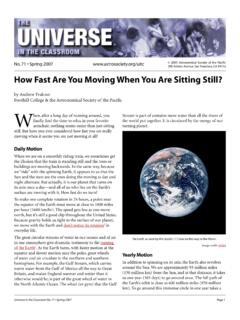



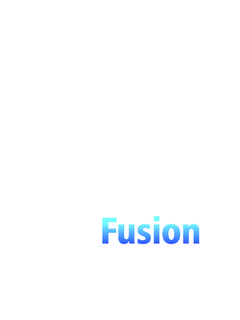
![Untitled-2 [www.columbia.edu]](/cache/preview/3/d/6/3/d/0/d/0/thumb-3d63d0d0343f66e2d86c238c9f8a44b3.jpg)
